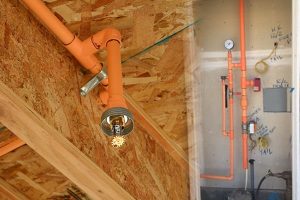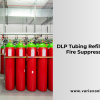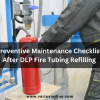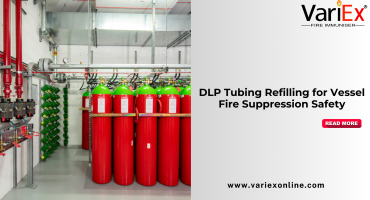![]()
Fire Immuniser
+91-7829629111
Email: info@variex.in
Varistor Technologies Pvt. Ltd.
Block-1, First Floor, Ardente Office One, Hoodi Circle, ITPL Main Road, Bengaluru, Karnataka 560048, IN
How To Turn Off Fire Sprinkler System
Fire sprinkler systems are crucial for protecting lives and property in the event of a fire. However, there may be occasions when it becomes necessary to turn off the sprinkler system temporarily, such as during maintenance or when dealing with a false alarm. Knowing how to properly turn off a fire sprinkler system can prevent unnecessary water damage and ensure safety. Here's a step-by-step guide on how to do it safely.
| Step | Action | Description |
|---|---|---|
| 1 | Assess the Situation | Evaluate whether there is an actual fire or immediate danger present. |
| 2 | Locate the Control Valve | Find the control valve near the main water supply, usually labeled and in a utility area. |
| 3 | Shut Off the Control Valve | Turn the control valve clockwise slowly and steadily to stop water flow to the sprinkler system. |
| 4 | Confirm System Is Off | Check pressure gauge or visually inspect sprinkler heads to ensure they're not releasing water. |
| 5 | Notify Relevant Parties | Inform occupants, security, and authorities about the temporary shutdown for maintenance. |
| 6 | Document the Shutdown | Keep records of when and why the sprinkler system was turned off for regulatory compliance. |
| 7 | Restore the System | Reopen the control valve by turning it counterclockwise carefully once maintenance is done. |
Step 1: Assess the Situation Before attempting to turn off the fire sprinkler system, assess the situation carefully. Ensure that there is no actual fire or immediate danger present. If there is a fire, evacuate the premises immediately and call emergency services.
Step 2: Locate the Control Valve The control valve is typically located near the main water supply for the building or facility. It may be in a utility room, basement, or outside the building. The valve is often labeled and may have a sign indicating its purpose.
Step 3: Shut Off the Control Valve Using a wrench or other appropriate tool, turn the control valve clockwise to shut off the water supply to the sprinkler system. It's essential to turn the valve slowly and steadily to avoid causing damage to the valve or the piping system.
Step 4: Confirm That the System Is Off Once the control valve is closed, confirm that the sprinkler system is no longer active. You can do this by checking the pressure gauge on the sprinkler system or by visually inspecting the sprinkler heads to ensure that they are not releasing water.
Step 5: Notify Relevant Parties If you are turning off the fire sprinkler system for maintenance purposes, notify building occupants, security personnel, and any relevant authorities about the temporary shutdown. This helps prevent confusion and ensures that everyone is aware of the situation.
Step 6: Document the Shutdown Keep a record of when and why the fire sprinkler system was turned off. This documentation can be valuable for regulatory compliance purposes and can also serve as a reference for future maintenance or emergency situations.
Step 7: Restore the System Once the maintenance work is complete or the reason for shutting off the sprinkler system no longer exists, carefully reopen the control valve by turning it counterclockwise. Monitor the system to ensure that it functions correctly and that there are no leaks or other issues.
Fire Sprinkler Systems:
- Fire sprinkler systems are designed to detect and extinguish fires automatically in buildings.
- They consist of a network of pipes containing water under pressure, with sprinkler heads strategically placed throughout the building.
- Sprinkler heads are activated individually by heat, typically when the temperature at the sprinkler head reaches a certain threshold, usually between 135°F (57°C) and 165°F (74°C).
- When a sprinkler head is activated, it releases water onto the fire below, suppressing or extinguishing it and preventing its spread.
- Fire sprinkler systems are highly effective in controlling fires, reducing property damage, and saving lives.
- There are different types of fire sprinkler systems, including wet pipe systems, dry pipe systems, pre-action systems, and deluge systems, each designed for specific applications and environments.
- Regular inspection, testing, and maintenance of fire sprinkler systems are essential to ensure they remain in proper working condition and comply with regulatory requirements.
- Fire sprinkler systems are often required by building codes and insurance companies in commercial and residential buildings to enhance fire safety and reduce risks.
- Advanced technologies, such as smart sprinkler systems and remote monitoring, are increasingly being integrated into fire sprinkler systems to improve efficiency, reliability, and response times.
Turning off a fire sprinkler system should only be done when necessary and with caution. Following the steps outlined above can help ensure that the process is carried out safely and effectively, minimizing the risk of water damage and maintaining the system's integrity. It's essential to always prioritize safety and to involve qualified professionals when in doubt.
Frequently Asked Questions
A fire sprinkler system is a network of pipes containing water under pressure, with sprinkler heads strategically placed throughout a building. It is designed to detect and extinguish fires automatically.
Fire sprinkler systems work by activating individual sprinkler heads when they detect heat from a fire. Once activated, the sprinkler heads release water onto the fire below, suppressing or extinguishing it.
Yes, fire sprinkler systems are highly effective in controlling fires, reducing property damage, and saving lives. Studies have shown that buildings with properly installed and maintained sprinkler systems experience significantly fewer fire-related deaths and property damage.
Building codes and regulations typically determine whether a building requires a fire sprinkler system. Generally, sprinkler systems are required in commercial buildings, high-rise structures, multifamily residential buildings, and other facilities where fire safety is a priority.
Fire sprinkler systems should be inspected and maintained regularly according to local regulations and manufacturer guidelines. Typically, inspections are conducted annually by qualified professionals to ensure proper functioning and compliance with safety standards.
Final Say
At VariEx.in and VariexOnline.com, we specialize in supplying and installing top-quality fire fighting systems and equipment. From fire extinguishers to advanced suppression systems, we offer comprehensive solutions tailored to your needs. Our experienced team ensures precise installation and maintenance for optimal safety.
Trust VariEx for reliable fire protection. Contact us online or call 7829629111 to learn more.
"WHAT YOU CAN READ NEXT"
 Read more +24 November 2023 in Fire Extinguisher
Read more +24 November 2023 in Fire ExtinguisherWhat types of fire extinguishers are available for different fire classes?
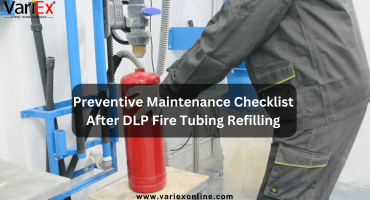 Read more +11 July 2025 in Fire Suppression
Read more +11 July 2025 in Fire Suppression

